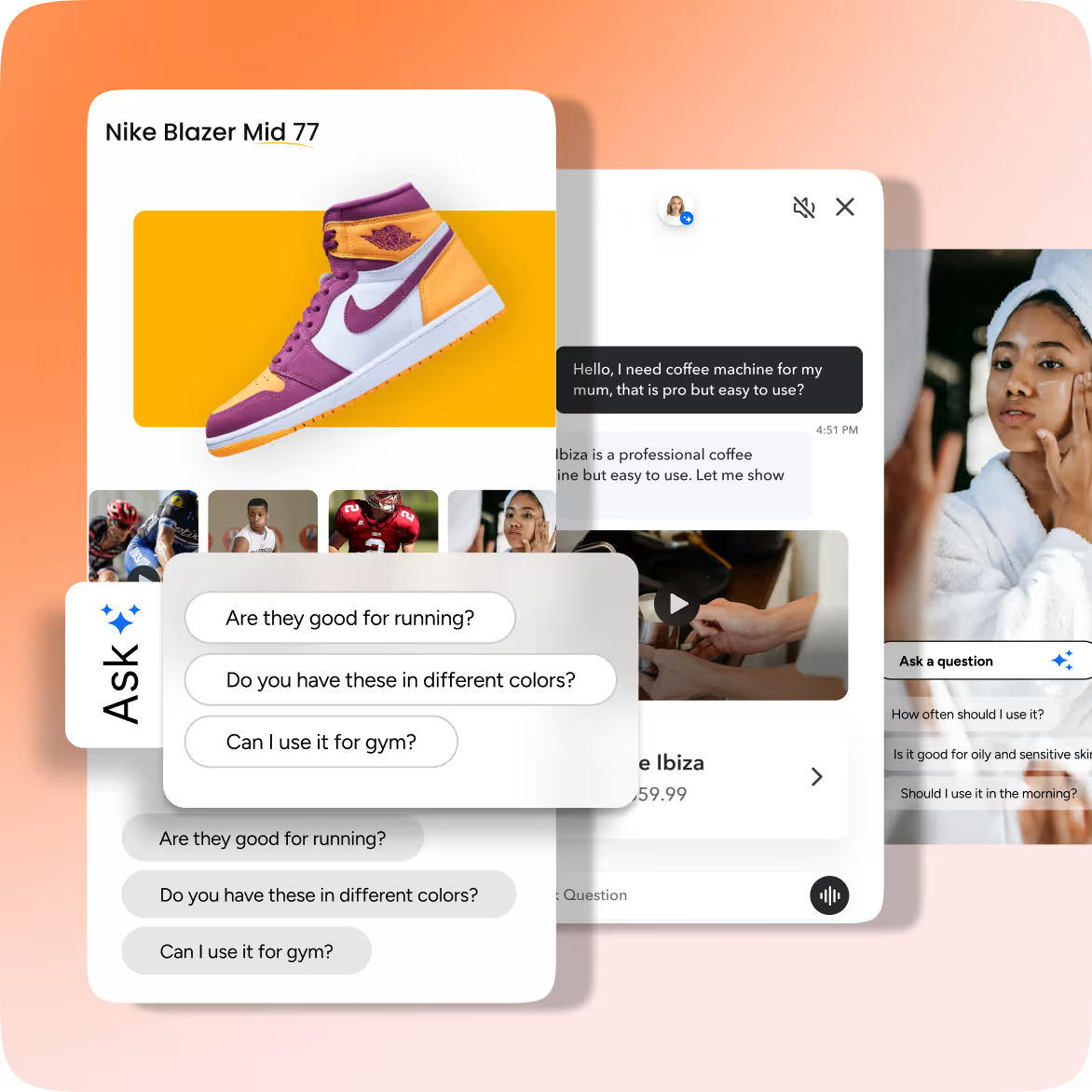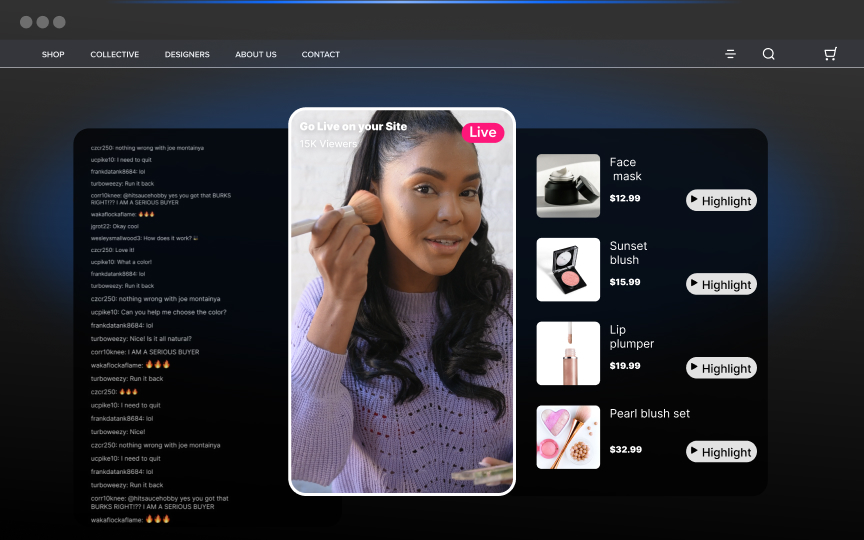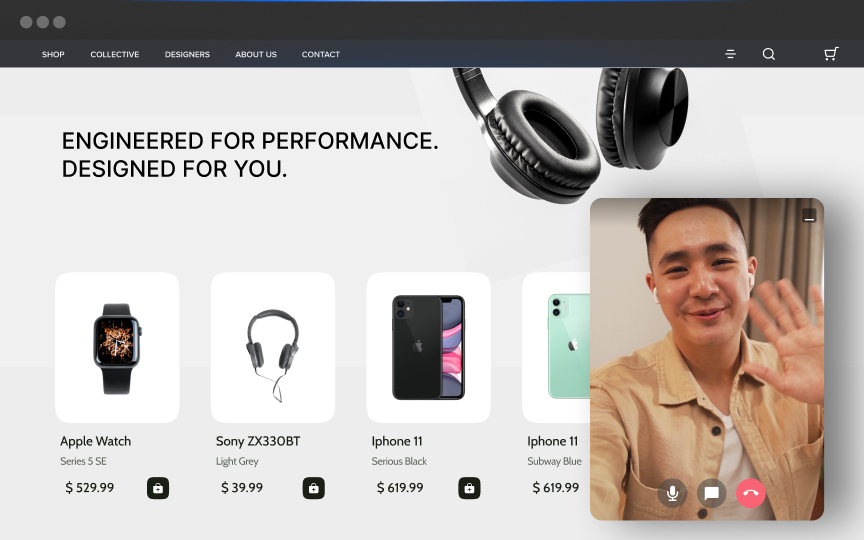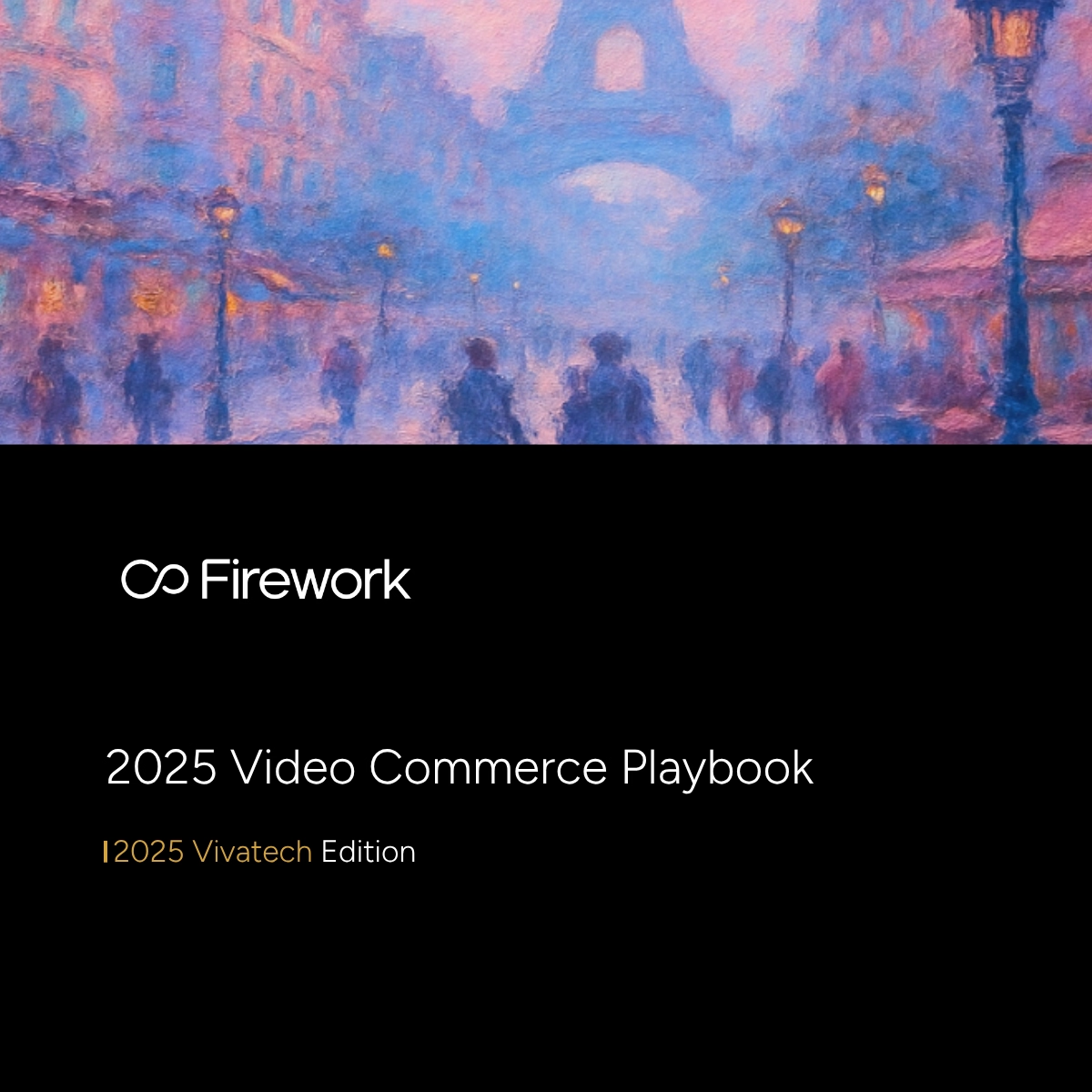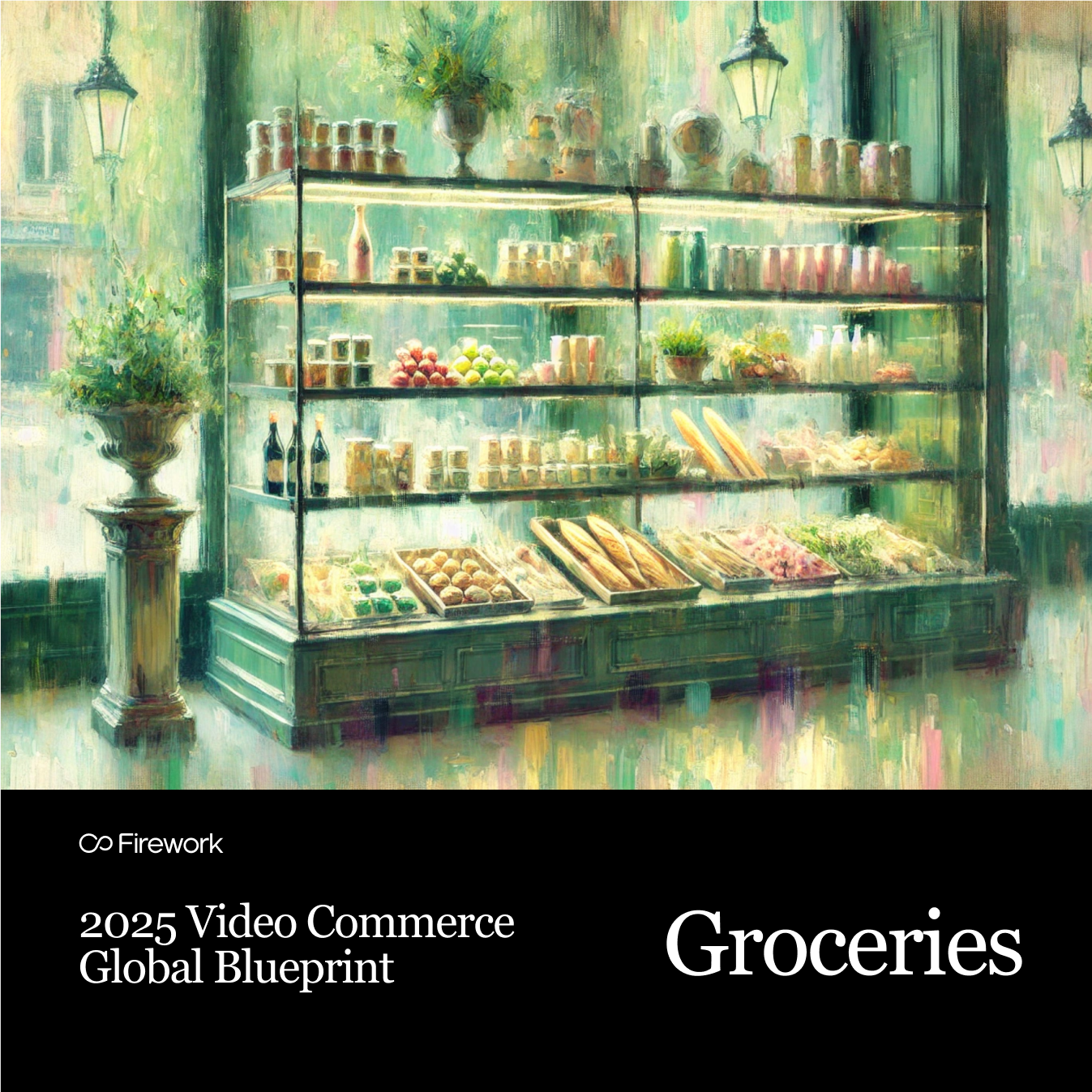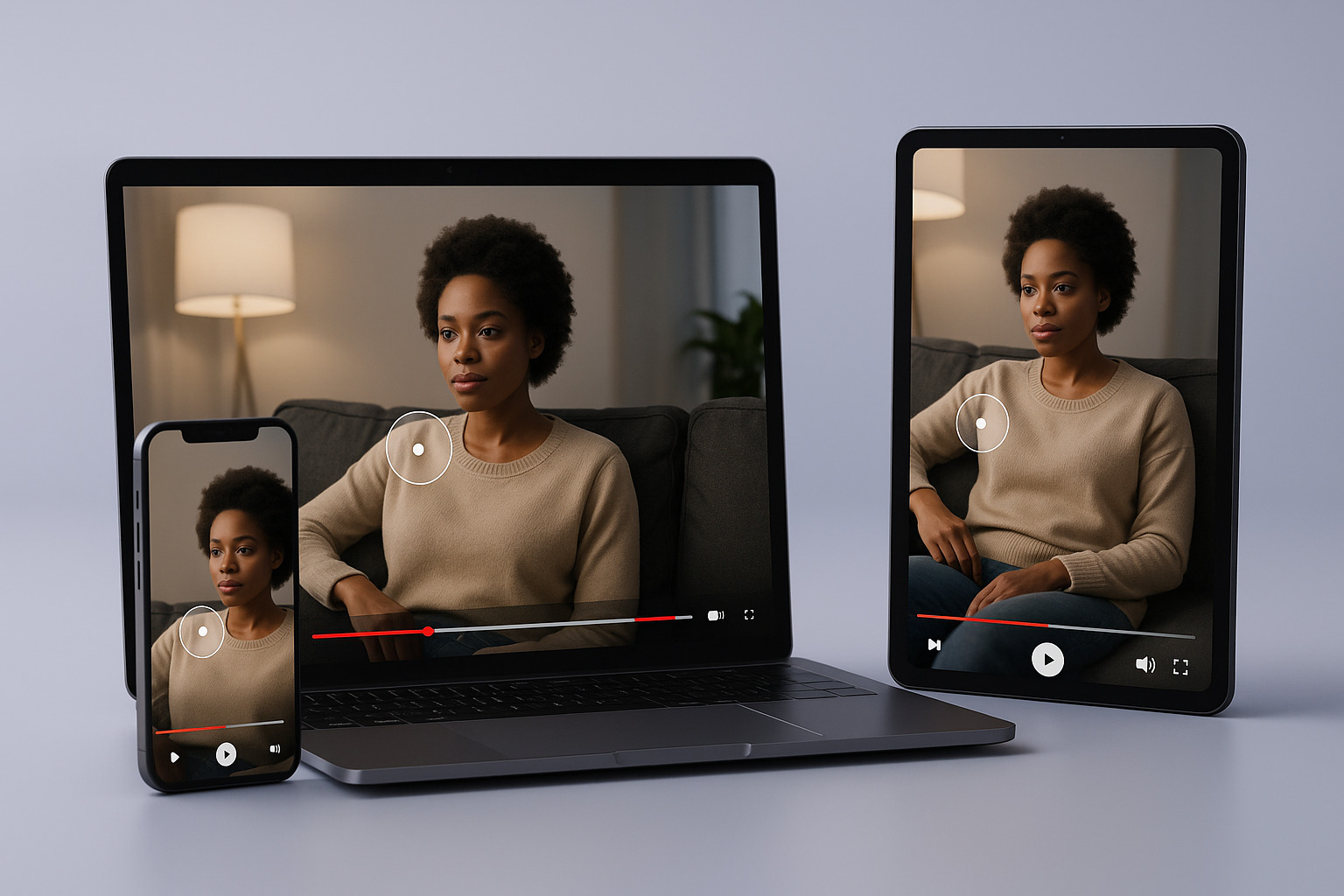Learning how to use video for tourism marketing is important in today's digital era, where visual content dominates online engagement. Video content has revolutionized tourism marketing by offering immersive experiences that transcend geographical boundaries.
Through high-quality visuals and storytelling, destinations can connect with potential travelers on a deeper emotional level. Videos allow viewers to virtually explore destinations, experiencing the sights and sounds as if they were there.
From showcasing the vibrant nightlife of bustling cities to capturing the tranquil beauty of secluded beaches, video brings the essence of each destination to life, making it a powerful tool in influencing travel decisions.
Benefits of Using Video for Tourism Marketing
Enhanced Engagement
In tourism marketing, knowing how to use video effectively grabs and keeps people's attention. It brings travel experiences to life, helping potential travelers picture destinations vividly.
Implementing strategic video marketing through videos with compelling narratives can guide viewers from initial curiosity to booking a trip. This is important because 64% of consumers are more likely to purchase after watching a product or service video.
Improved Conversion Rates
Video not only attracts attention; it boosts conversions too. Including a video on a landing page can increase conversion rates by up to 80%. In tourism, compelling stories guide curious viewers toward booking. Featuring local attractions, accommodations, and unique experiences can turn casual interest into reservations.
Broader Reach
Using video for tourism marketing expands a campaign's reach significantly. Social media platforms like YouTube and Instagram make it easy to share eye-catching travel content worldwide. Videos often get more shares than text or images. In fact, social videos can generate 1,200% more shares than text and image content combined. Incorporating video in tourism marketing helps companies connect emotionally with a global audience.
4 Types of Effective Tourism Videos
Creating engaging tourism videos showcases what makes a place or experience special. Here are some styles that resonate with viewers.
Destination Showcases
Destination showcase videos feature vivid footage of a location's landmarks, cultural traditions, and scenery. They inspire wanderlust. A tourism bureau might create a seasonal montage highlighting the destination's variety of experiences, such as lively markets, iconic architecture, and scenic backroads.
Customer Testimonials
Customer testimonial videos offer genuine accounts of travelers' experiences. By sharing relatable voices and firsthand stories, they tap into the power of social proof. Gathering clips from visitors who have explored unique local events or lesser-known spots gives potential travelers an authentic glimpse of what to expect.
Event Highlights
Event highlight videos, when crafted as great short-form videos, capture the excitement of festivals, concerts, and other gatherings. They reinforce a destination's vibrant identity. A brief, energetic reel of an annual cultural celebration, with enthusiastic crowds and captivating performances, draws attention to the spirit of the place.
Behind-the-Scenes Tours
Behind-the-scenes tours invite viewers into areas rarely seen by typical tourists. This could be a glimpse of how a local festival is organized or an intimate look at daily life within a historic site. These videos create a sense of exclusivity, making audiences feel connected and special, increasing repeat purchases.
12 Best Practices for Using Video in Tourism Marketing
Here are some guidelines to ensure you know how to use video for tourism marketing effectively, making your videos stand out, spark curiosity, and inspire action.
1. Tell a Compelling Story
Tell a compelling story by weaving narratives that highlight the destination's unique attributes. Focus on elements such as:
- Local folklore
- Historical events
- Community traditions
Incorporate personal anecdotes from residents or travelers to add depth and authenticity. An effective story should evoke emotions, whether it's excitement, nostalgia, or curiosity, allowing viewers to connect with the destination on a personal level.
2. Optimize for Different Platforms
Optimize for different platforms by tailoring your content to meet the specific requirements and audience behaviors of each. For instance,
- Implementing a short video strategy with vertical videos of 15 to 60 seconds is ideal for TikTok and Instagram Reels, where users prefer quick, engaging snippets.
- Longer, high-definition, landscape-oriented videos are better suited for YouTube or Vimeo, where viewers are open to in-depth content.
Additionally, consider platform-specific features like hashtags on Instagram or thumbnail importance on YouTube.
3. Incorporate High-Quality Production
Invest in professional equipment or hire experienced videographers who are adept in the video production process to ensure your videos feature sharp, high-resolution visuals and clear, smooth audio.
Consider utilizing emerging technologies such as AI-generated videos to enhance production quality and reduce costs. Effective editing that includes the following can greatly enhance the viewer’s experience.
- Color correction
- Seamless transitions
- Appropriate background music
High production quality conveys professionalism and attention to detail, which reflects positively on the destination itself.
4. Include a Clear Call-to-Action (CTA)
Include a clear call-to-action (CTA) to prompt viewers to take the next step in engaging with your destination. This might involve:
- Encouraging them to visit your website for more information
- Sign up for a newsletter
- Take advantage of a limited-time promotion
- Share the video with friends
The CTA should be seamlessly integrated into the video, appearing at a strategic point when the viewer is most engaged. For example, after showcasing an exhilarating adventure activity, invite viewers to "Book your adventure today." A well-placed and compelling CTA increases the conversion potential of your interactive tourism videos.
5. Use User-Generated Content
Use user-generated content (UGC) by inviting past visitors to share their photos, videos, and experiences. This content provides authentic perspectives and adds diversity to your marketing materials.
Promote hashtags or social media campaigns to collect this content, and consider offering incentives such as contests or feature opportunities to encourage participation. By showcasing real traveler experiences, you foster a community around your brand and make your marketing more relatable.
6. Use Data-Driven Insights for Personalization
Use data-driven insights, including AI-driven personalization, for personalization by analyzing viewer demographics, behaviors, and preferences. Tools like Google Analytics, YouTube Analytics, and social media insights can reveal which videos perform best, at what times, and with which audiences.
Use this information to personalize your content—for example, if data shows a high engagement rate among adventure seekers, create more videos highlighting extreme sports or outdoor activities available at your destination.
7. Collaborate with Local Businesses and Influencers
Partnering with popular influencers who share your target audience can significantly boost your visibility. Ensure the influencer's values and style align with your brand for an authentic collaboration.
Additionally, working with local businesses—such as restaurants, hotels, and tour operators—can provide access to unique experiences and locations for your videos. Moreover, embracing the AI and AR revolution can enhance these collaborations, offering cutting-edge experiences to your audience.
8. Incorporate Augmented Reality (AR) and Virtual Reality (VR)
Incorporate augmented reality (AR) and virtual reality (VR) technologies to create immersive and interactive experiences. VR can offer virtual tours of hotels, attractions, or entire destinations, allowing viewers to explore as if they were physically present.
AR can enhance videos by overlaying digital information onto real-world images, such as showing historical events at a landmark when viewed through a smartphone app. Implementing these technologies differentiates your marketing efforts and provides an engaging way for potential travelers to connect with the destination, increasing their desire to visit.
9. Focus on Story-Driven Social Proof
Rather than simply presenting reviews, craft narratives around these endorsements to make them more engaging. For instance, create a mini-documentary following a traveler's journey through your destination, highlighting their genuine reactions and experiences.
Including real images, quotes, and footage from visitors adds credibility and helps overcome potential objections by addressing common concerns or showcasing satisfaction.
10. Maintain Consistent Branding Across Videos
Use a unified visual identity by incorporating consistency in elements such as:
- Color schemes
- Typography
- Logos
- Graphics
Establish a consistent tone and style in your messaging—whether it's adventurous, luxurious, family-friendly, or eco-friendly—to resonate with your target audience.
Consistency ensures that every time viewers encounter your content, they easily associate it with your brand, enhancing recall and contributing to a cohesive marketing strategy.
11. Engage Viewers with Interactive Videos
Various interactive videos encourage viewers to participate actively in your story. Features like clickable hotspots, polls, and quizzes extend watch time, provide valuable audience insights, and make the experience more memorable.
You can even start livestreaming your content to connect with audiences in real-time.
Interactive videos like these create a more personalized experience, increase viewer engagement, and make your content more memorable.
12. Keep Content Fresh and Relevant
Keep content fresh and relevant by regularly updating your videos to reflect current events, seasonal changes, and the latest video marketing trends.
- Feature new attractions
- Recent renovations
- Upcoming festivals
- Changes in local regulations that may affect travelers
This not only keeps your audience informed but also demonstrates that your destination is dynamic and evolving. Timely content is more likely to be shared and can capitalize on trending topics or popular interests.
Distribution Strategies for Video Tourism Marketing
Once you've produced high-quality tourism videos, distributing them effectively is the next step. Here's how to use video for tourism marketing by reaching and captivating your target audience.
Social Media Platforms
Social media offers massive exposure for your video content.
- Instagram: Utilize Reels and Stories to post short, visually striking snippets that highlight key experiences. Use location tags and relevant hashtags to reach a wider audience. Collaborate with influencers for takeovers or sponsored posts to tap into their follower base.
- Facebook: Leverage Facebook Live for real-time interaction and a sense of immediacy, such as streaming events, virtual tours and interactive experiences, or Q&A sessions. Upload videos natively for better algorithmic reach, and use Facebook Ads to target specific demographics.
- TikTok: Embrace the platform's focus on creativity and authenticity with short-form videos. Participate in trending challenges or create your own to boost engagement. Incorporate popular music and hashtags to increase visibility among younger audiences.
- YouTube: As the second-largest search engine, YouTube is ideal for hosting longer, in-depth videos. Optimize your videos with SEO-friendly titles, descriptions, and tags. Create playlists to organize content thematically, and consider YouTube Ads to reach a broader audience.
- LinkedIn: Utilize LinkedIn for sharing professional content, such as industry insights, B2B tourism opportunities, or partnerships. Video posts can enhance engagement with businesses and professionals in the travel sector.
Email Marketing
Email allows direct, personalized communication with your audience.
- Personalization: Segment your email lists to tailor content—sending adventure tourism videos to thrill-seekers and luxury resort videos to those interested in high-end experiences.
- Clickable Thumbnails: Since embedding full videos can be problematic, use an engaging thumbnail linked to the video on your website or YouTube channel. Ensure the landing page is optimized for mobile devices.
- Automated Campaigns: Use automated email sequences to send timely videos based on user interactions, such as a welcome series for new subscribers or follow-ups after a download.
Website Integration
Your website is your digital home base for tourism marketing.
- Homepage Placement: Feature a flagship video prominently on your homepage to immediately engage visitors and showcase the destination's highlights.
- SEO-Friendly Details: Add descriptive titles, meta tags, and transcripts to your video pages to improve search engine rankings. This helps attract organic traffic from people searching for related content.
- Video Galleries: Create dedicated sections for different types of videos—such as testimonials, event highlights, or VR tours—to allow visitors to explore content that interests them.
Collaborations with Influencers
Influencers can introduce your content to passionate, niche communities.
- Choose the Right Influencers: Identify influencers whose audience aligns with your target market. Analyze their engagement rates and content style to ensure a good fit.
- Co-Create Content: Work collaboratively with influencers to develop content that is authentic and engaging. Allow them creative freedom to maintain authenticity while ensuring your destination is highlighted effectively.
- Cross-Promotion: Encourage influencers to share the content across their platforms while you promote it on yours, maximizing reach and engagement.
Measuring Success in Video Tourism Marketing
Analyzing your video marketing performance is critical for refining future campaigns and reaching business goals. Tracking the right metrics helps you see what's working and where you can improve.
Engagement Metrics
- Views and Watch Time: Measure total views to assess reach, and analyze average watch time to understand how engaging your content is. High watch time indicates strong viewer interest.
- Likes, Comments, and Shares: Monitor these to gauge audience reactions and the viral potential of your videos. Encourage comments by asking questions or prompting discussions within the video.
- Click-Through Rate (CTR): Track how many viewers click on your CTA or links provided, indicating effective content that motivates action.
Conversion Rates
- Lead Generation: Measure the number of leads generated through sign-ups, inquiries, or downloads that result from your videos.
- Sales and Bookings: Assess the direct impact on revenue by tracking bookings or purchases that can be attributed to your video content.
- Return on Investment (ROI): Calculate ROI by comparing the revenue generated from video marketing efforts against the costs of production and distribution, ensuring that resources are allocated efficiently.
Audience Feedback
- Surveys and Polls: Post-viewing surveys can provide qualitative data on viewer satisfaction and preferences, offering insights into what content resonates most.
- User-Generated Content (UGC): The amount and quality of UGC can reflect the level of audience engagement and willingness to interact with your brand.
- Sentiment Analysis: Utilize tools to analyze comments, reviews, and social media mentions to understand audience sentiment toward your videos and identify areas for improvement.
Conclusion
For travel professionals, knowing how to use video for tourism marketing strategically is not just a luxury—it's a necessity in the competitive digital landscape. This immersive format conveys each destination's unique character, inspires wanderlust, and strengthens your brand presence.
As video continues to dominate online content consumption, a well-planned video marketing strategy can lead to stronger engagement, increased bookings, and tangible results with today's travelers. By implementing best practices and continuously measuring success, tourism marketers can harness the full potential of video to drive growth and connect with audiences around the world.
Put your commerce in motion. Find out how Firework can power your business forward by visiting Firework.
FAQs
How can video be used for marketing?
Video can be used for marketing by creating engaging content such as product demos, testimonials, behind-the-scenes footage, and explainer videos. It boosts engagement, builds trust, and improves conversion rates across platforms like social media, websites, and email marketing.
What are the 5 P's of tourism marketing?
The 5 P’s of tourism marketing are Product, Price, Place, Promotion, and People. These elements help businesses create attractive tourism experiences, set competitive prices, reach the right audience, market effectively, and provide excellent customer service.
How to do digital marketing for tourism?
Digital marketing for tourism involves using SEO, social media, PPC ads, influencer collaborations, and video content to attract travelers. Optimizing for search engines, running targeted ads, and showcasing experiences through high-quality visuals can drive more bookings.
How can you use videos to reach customers?
Videos can reach customers by delivering engaging, informative, and visually appealing content on social media, YouTube, and websites. Live streams, short-form reels, and storytelling-based videos can help businesses connect emotionally with their audience and boost conversions.
Unlock Exclusive Insights
By submitting this form, you agree to Firework's privacy policy and consent to receive personalized marketing communications. You can unsubscribe at any time.
